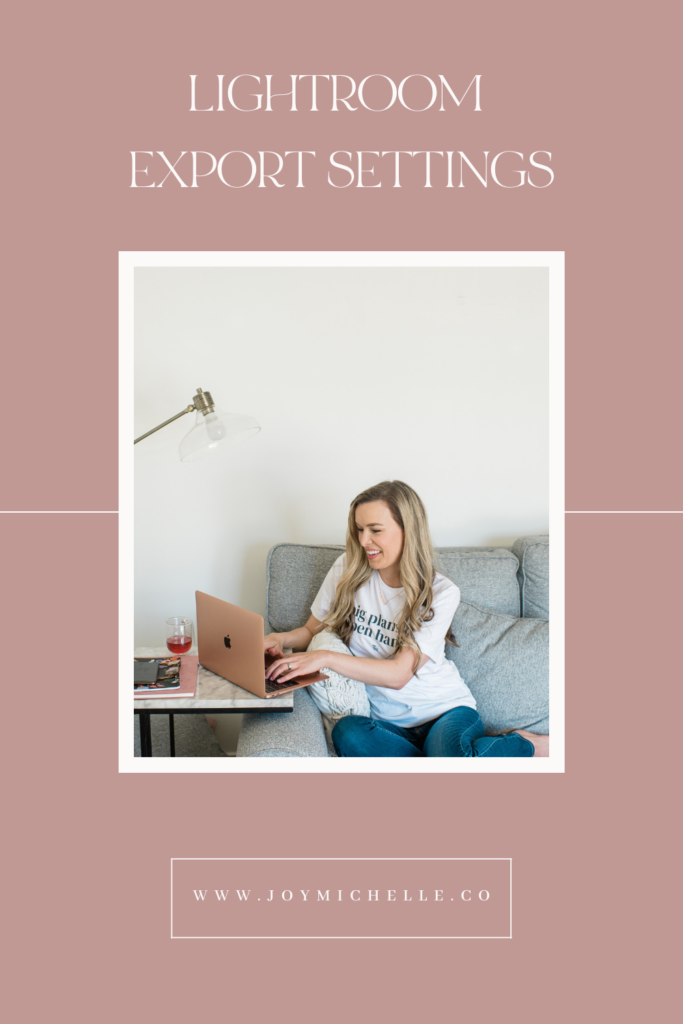Have you ever sat with your export panel open in Lightroom and wondered, “What settings are best for exporting my high resolution images?” If so, then you’re in the right place! In this video, I’m going to be breaking down all my export settings and hitting on 3 specific topics. I’ll be giving you an explanation for what each of the items means while exporting your photos. I’ll also be providing you with some specific details you’ll want to know if you are going to want the highest possible JPEG quality for your images. And finally, how you can expedite this process for yourself in the future.
Take a peek at the video below where I share my screen and break down the Lightroom Classic export panel.
How to Export Images From Lightroom Classic
Export Settings
First, you can come to the bottom of the Lightroom classic and press the “Export” button if you are in the library module. You can also go to the top and click “File” and click “Export” which will open the export panel. This is where you will spend the majority of your time.
You’ll first need to decide where you want the image to go after you save it under “Export Location”. I personally have it saved to my desktop but you could have it go to a folder, hard drive, and more. I save mine on my desktop under a “Subfolder”. Name the folder and then scroll down to “File Naming”. I like to customize my file names so I can easily search for it in the future.
Pro Tip: Make sure you customize the name above for your file before exporting so it’s easy to locate in the future.
File Settings
Once you’ve setup your Export Settings, scroll down to “File Settings”. This is where you will choose to export a JPEG image and set your quality. I always keep the quality up to 100 for my images. Make sure too that you DO NOT limit the file size. The color space will be sRGB which will be great for printing.
After this, you’ll scroll down to “Image Sizing” and adjust the resolution to 300 pixels per inch for the best possible resolution for printing. Make sure too that you don’t resize to fit so you aren’t restricted in any way. Now, if for some reason you wanted to resize for social media or other purposes, you could adjust the resolution around to 100 because that won’t make much of a difference.
Additionally, I don’t do any “Output Sharpening” settings because I like the image to remain how I edit it inside Lightroom. You’ll also want to adjust your metadata settings too. This is what file information is attached to the image so you can adjust your settings accordingly.
Pro Tip: You have the option of including a watermark too on your images. This is great if you’re sending a proofing gallery or submitting your images and want to have a custom watermark for your brand.
The last thing you’ll be asked about is “Post-Processing” and this is where you decide what you want to happen once you exit from Lightroom. One thing you could do is have it open in another application like Photoshop or something else. Most of the time I have it set to do nothing afterwards.
Expedite The Process
One of my favorite ways to expedite this process in the future is to add a preset to the photos that I export. When setting up your export settings, go to the left hand side and click “Add” and then create your custom preset for exporting. You can keep that preset in there so you don’t have to go through all of these export settings in the future. Setup one for both your high resolution images as well as social media so that you have a resized option as well.
Once finished, you’ll click “Export” and you’ll see the status bar in the top left corner. Locate your images to double check that they look as you want and you’re good to go!
I hope you find this video to be beneficial and helpful. If you’re looking for a place to gain more education, resources, tips, and more I’d love to invite you to join my Photoboss Facebook community with over 10,000 other photographers from around the world. You can join by clicking HERE! I’ld love to hear too what you enjoyed about this video above and what you’d love to see more of in the future. Leave a comment below and let me know!
If you decide to use any of the links above and buy through them, I’ll receive a small commission back. All of those affiliate income commissions really add up over time and help generate revenue to help support this channel
You May Also Like:
4 Things To Know About Going From Hobby To Pro
Steps To Booking A Photography Client | Honeybook Onboarding Workflow
How To Save And Backup Your Photos Like A Pro
Take 50% Off Your First Year Of Honeybook
Join Photoboss Facebook Community

